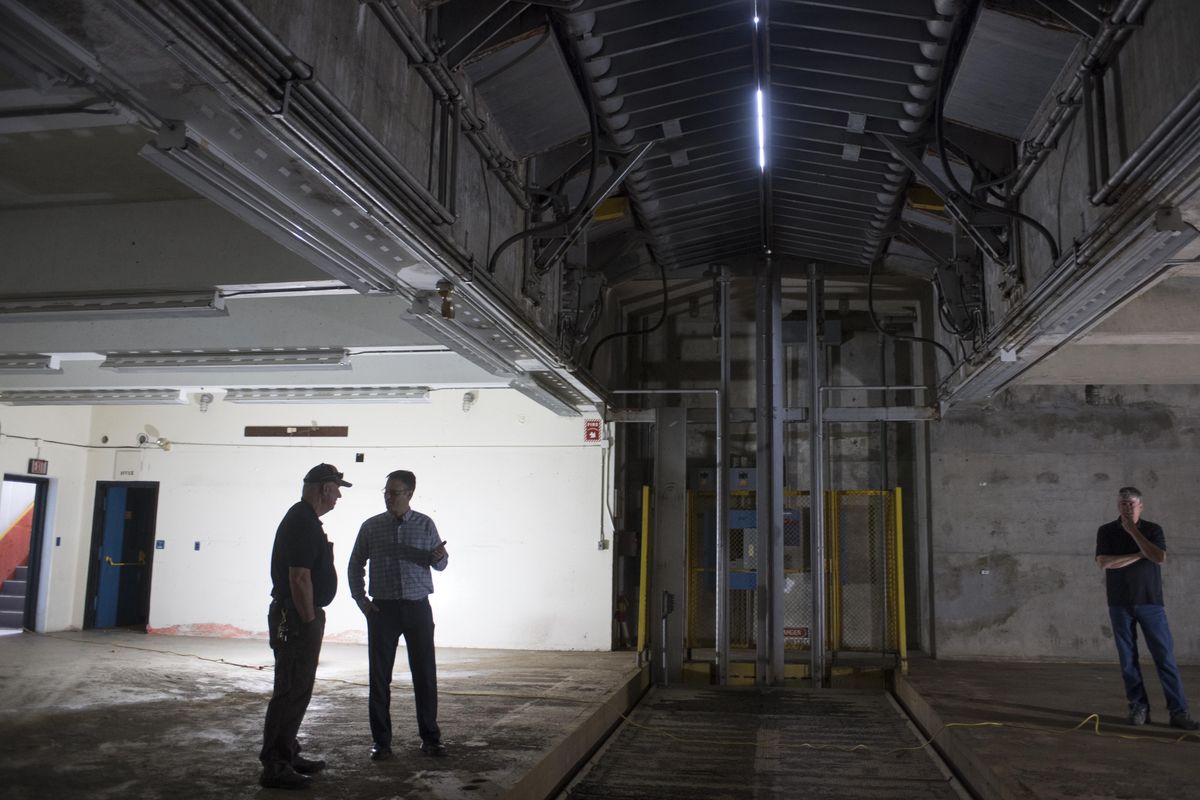Cold War era missile base now administrative heart of Cheney schools

On sunny days, the rolling hills of the Four Lakes area spread out in front of Superintendent Robert Roettger’s desk. He can see for miles in most directions.
That’s because his Cheney School District office was originally built to help spot and shoot down enemy airplanes attacking Fairchild Air Force Base during the Cold War.
The Cheney School District bought the 65-acre, former Nike Missile Base, for $29,000, and district administrators moved into the structure in 2012. With it the district acquired 18 outbuildings which now provide office and storage space.
“We have storage to grow into,” said Rich Brown, the district’s assistant director of maintenance.
On a sunny Thursday afternoon, Brown stood in one of the base’s three 20-foot deep, heavily fortified missile bays. The damp, dark room resembles something from a post-apocalyptic cold war horror movie.
“I’m not really comfortable down there myself,” joked Gary Albrecht, the district’s carpenter.
In fact, Z-Nation producers toured the silos with the intention of filming there, Brown said.
“I will say, they overbuilt these buildings,” said Assistant Superintendent Sean Dotson. “They are heavy.”
He recalls one electrician having to cut through a foot and a half of cement to wire a room. The district has retrofired the buildings, storing textbooks where munitions once sat. The old generator room, which powered the storage and launch of the powerful rockets, is now the superintendent’s office.
As part of the sale the district is prohibited from selling or otherwise profiting from the land for 20 years, Dotson said.
The purchase of the land came about in an odd way. In 2005 the district needed a larger freezer to store bulk food for school lunches, so they set aside about $300,000 to buy the freezer and build a structure to house it.
During that process the missile site was decommissioned and went on the market. The school district noticed and filed an application to purchase. The air force cut the district a deal.
Now, the freezer, which they bought, is housed in an old warehouse.
“It came with incredible infrastructure because it was designed to be a fully functional military base,” Dotson said. “I just feel like it was the perfect partnership.”
Although the district headquarters is not inside Cheney city limits, Dotson said it is centrally located. At roughly 380 square miles, Cheney School District is geographically large. The district office is about 10 minutes from each school between Cheney and Airway Heights.
“It’s actually a pretty good center,” Dotson said.
Research and development of the Nike Missile program started in 1945. The Nike Missile itself is named after the Greek goddess of victory.
Nike Missile bases were generally divided into three different areas – the administrative branch, the missile control area and the launch area. The control area was placed at the highest point possible so that radar could accurately and quickly track incoming aircraft, while simultaneously controlling the flight of the Nike missile.
According to a Spokesman-Review article from April 15, 1955, the Nike missile installations would create a “bristling steel ring” around the base.
Four were built, one at each corner of the base. The Cheney location was finished in 1957. However, the site would only serve as a missile base for four years, when the first generation Nike Missile, the Ajax missiles, were phased out for the larger Nike Hercules missiles. The storage bays were too small to hold the new missiles.
In 1961 the Four Lakes base, which at the time was known as either the B Battery or Nike Site F-37, was surplussed, according to a history of the site prepared by the Air Force.
The Washington Air National guard took over the installation and used it as a communication station starting in 1961. That’s when the base was renamed the Four Lakes Communication Station.
Now the Cheney School District plans to remodel some of the other buildings. And administrators may even relocate certain programs out of schools and up the hill to the former base.
Already the district’s home school partnership program, Home Works, has space on the old base. From their small playground the kids in that program are treated to the full beauty of Eastern Washington.
“Pretty fantastic views,” Dotson said.